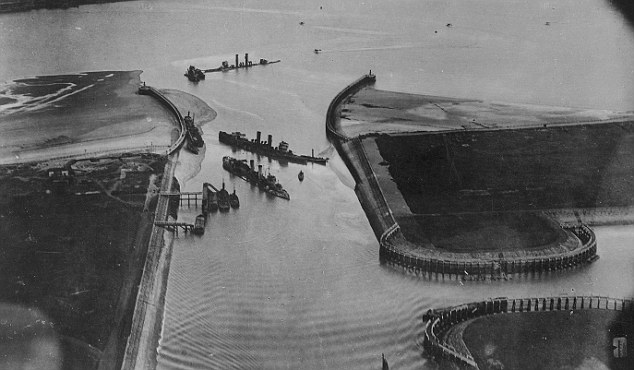Although the end of the First World War was close, with only a few months left of it, the Germans did not seem to want to stop the fighting and their U-boast were still seen as a threat.
The raid took place on April 23, 1918 with the Royal Navy trying to block the port of Zeebrugge, a huge submarine base in Belgium. Their plan was to put together several ships and just place them at the port’s entrance and to have the HMS Vindictive cruiser bring a 200 unit of Royal Marines. However, their plan was not working out at all, since shortly after, the German fire began and all the ships meant to block the entrance to the port were sunk in the wrong place, followed by the old cruiser HMS Vindictive, which also took the Royal Marines to the wrong spot.
The raid on Zeebrugge recorded over 580 casualties, with 227 soldiers who lost their lives. Not to worry the people at home, the raid was declared a success although it failed, because the entrance of the port was only blocked for a few days. Following the end of the raid, eight Victoria Crosses were awarded to servicemen.
Before being buried, the bodies of the dead British sailors were laid out on the ground floor of the Dover Museum, just before being sent off to their final resting places in St James’s Cemetery, Dover, and Hamilton Road Cemetery, in Deal. The Dover Museum has become an interesting and popular spot for visitors who want to learn more about how the town became an important military centre during the First World War, but it also centers on the people of Dover and their huge contribution to the conflict effort, the Kent Online reports.
People who lived in Dover during World War One needed passes to leave or to enter the town, as it was surrounded by fortifications and airfields. It was a dangerous place and it is well known the fact that the very first and last bombs of the conflict landed on Dover.
Inside the museum you can find the old flag of the HMS Vindictive cruiser, to remind you of the Zeebrugge Raid in Belgium, while giant posters hanging on the wall will tell you the story of Dover from 1914 to 1918.
Visitors can also find two interactive checkpoint “huts”, can listen to wartime recordings and other from people who lived through those times and remembered the first bomb and the air raid shelters.
//
